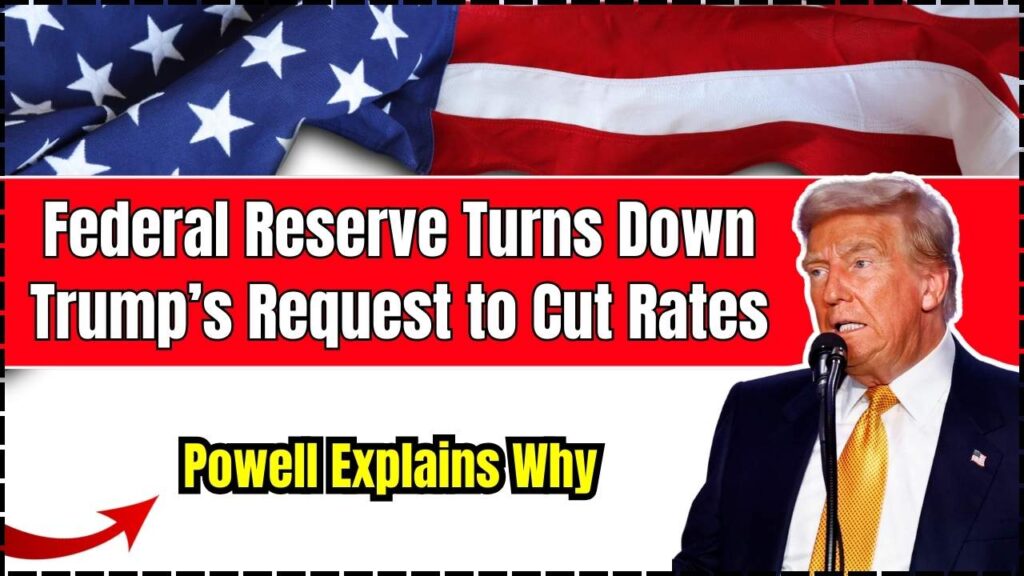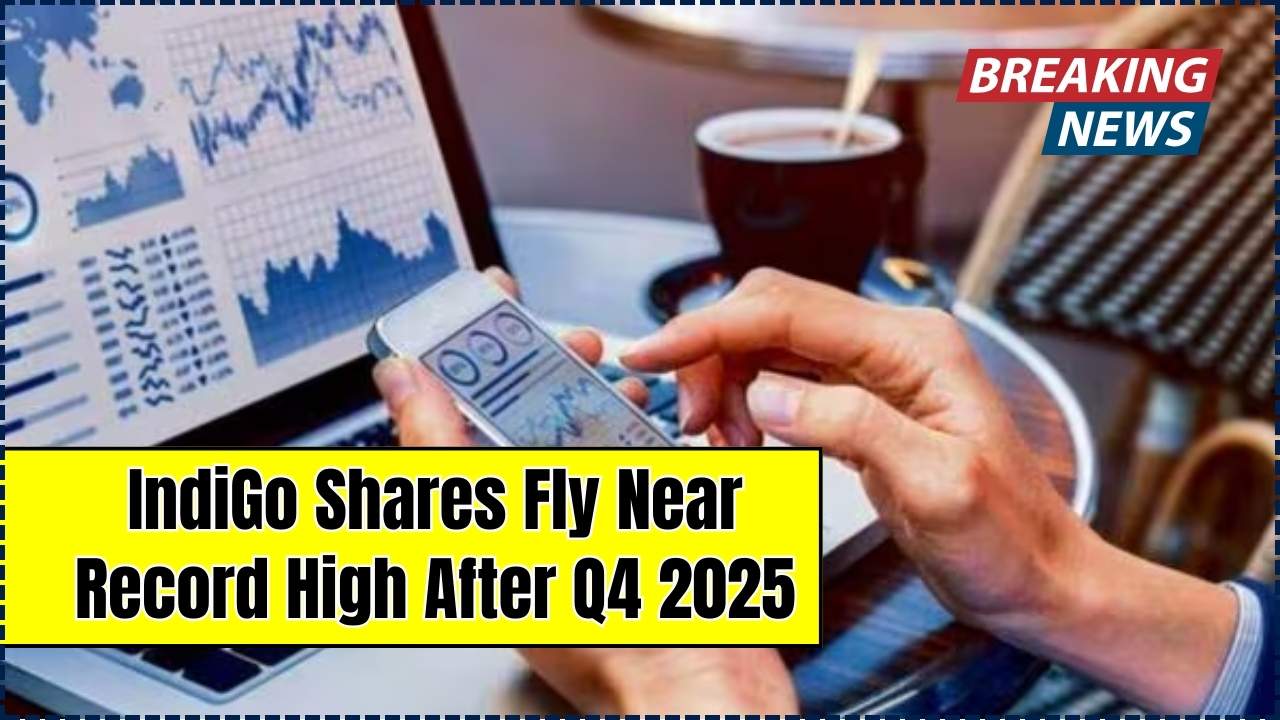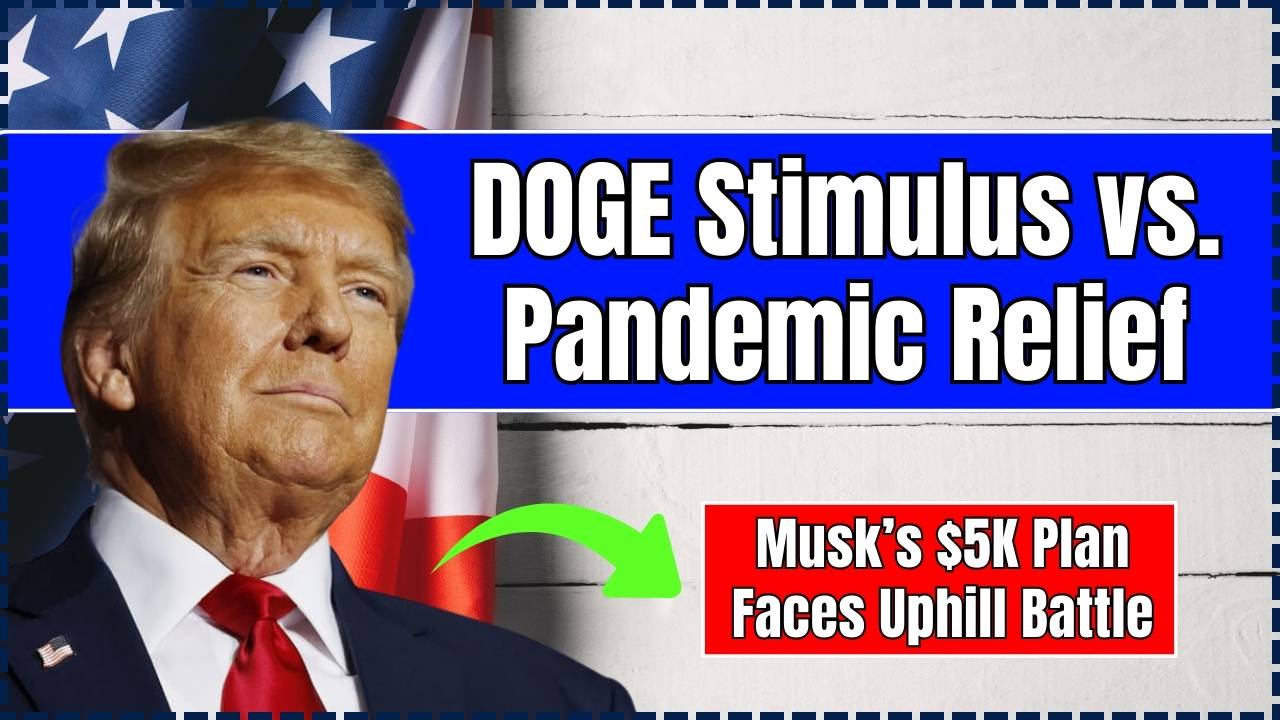Federal Reserve Turns Down Trump’s Request to Cut Rates: On May 8, 2025, the Federal Reserve declined to cut interest rates, holding the federal funds rate steady at 4.25%–4.50%. This decision comes despite intensifying pressure from former President Donald Trump, who publicly called for immediate rate cuts to stimulate the economy. Fed Chair Jerome Powell, however, made it clear that the central bank’s policy will remain data-driven and independent of political influence.

The move has sparked headlines and debates across political and economic circles, with some hailing the Fed’s resilience and others expressing concern over missed growth opportunities. In this article, we unpack the full implications of this decision, what it means for consumers and markets, and how Powell and the Federal Reserve plan to navigate a complex economic landscape heading into the second half of 2025.
Federal Reserve Turns Down Trump’s Request to Cut Rates
| Topic | Details |
|---|---|
| Rate Decision | Fed holds rates at 4.25%–4.50% |
| Inflation Rate (March 2025) | 2.4%, still above the 2% target |
| GDP Growth (Q1 2025) | -0.3% contraction |
| Jobs Added (April 2025) | 177,000 |
| Consumer Confidence | Second-lowest level since 1952 |
| Trump’s Reaction | Called Powell a “FOOL”; floated removal, later backtracked |
| Powell’s Position | Emphasized independence and long-term economic health |
| Next Fed Meeting | Scheduled for late June 2025 |
Despite intense calls for action, the Federal Reserve chose stability over reactivity. In doing so, it reaffirmed its commitment to long-term economic health and its independence from partisan politics. Jerome Powell’s leadership continues to emphasize caution, clarity, and credibility in an era of growing political noise.
As Americans navigate high borrowing costs and ongoing price pressures, the Fed’s patient approach may prove to be a crucial safeguard against long-term economic instability.
Federal Reserve’s Role
The Federal Reserve, often referred to as “the Fed,” is the central banking system of the United States. Its mission is to promote a stable economy by managing inflation, supporting employment, and moderating long-term interest rates. One of the Fed’s most powerful tools is adjusting the federal funds rate — the interest rate at which banks lend to one another overnight.
Lowering the rate typically makes borrowing cheaper, which can boost consumer and business spending. Raising the rate helps control inflation by making borrowing more expensive and slowing demand. As of May 2025, the Fed is choosing to stay the course and avoid rate reductions.
Why Didn’t the Fed Cut Rates?
1. Inflation Is Not Fully Controlled
The inflation rate as of March 2025 was 2.4%, a drop from pandemic-era highs but still above the Fed’s 2% comfort zone. Powell has repeatedly emphasized that cutting rates too soon could cause inflation to rebound, undermining the Fed’s long-term goals.
2. The Economy Shows Contradictory Signs
Despite a Q1 contraction of 0.3% in GDP, the labor market remains resilient. April saw the creation of 177,000 new jobs, and wages have continued to rise modestly. However, consumer sentiment has plummeted to historic lows, signaling potential future weakness.
3. Global and Geopolitical Factors
Powell also pointed to new tariffs on European and Chinese imports, which have complicated supply chains and increased business costs. Uncertainty over global growth, currency fluctuations, and upcoming elections are all additional reasons to maintain policy caution.
Powell vs. Trump: Independence Under Pressure
In a flurry of social media posts and public speeches, Donald Trump lashed out at Powell, labeling him a “FOOL” for failing to lower interest rates. Trump argued that the Fed’s inaction risks sending the U.S. into a deeper slowdown.
In response, Powell reaffirmed that the Fed does not take political cues, stating, “Our decisions are based solely on economic data and our legal mandate. We don’t respond to short-term political interests.”
Although Trump hinted at removing Powell, experts quickly noted that such an action would be legally and historically unprecedented. The Chair serves a fixed four-year term and can only be removed “for cause.” Any attempt to fire Powell without just cause would likely trigger a constitutional and market crisis.
What Does This Mean for You?
Credit Cards and Loans
With no change in the benchmark rate, credit card APRs, personal loan rates, and auto loan rates are expected to remain high. Consumers should consider consolidating debt or looking for fixed-rate options where possible.
Mortgage Market
Mortgage rates — particularly on 30-year fixed loans — remain elevated. For potential homebuyers, this means continued higher monthly payments, though refinancing might become an option later in 2025 if rates eventually decline.
Job Market Stability
While the job market remains robust, economists warn that prolonged high-interest rates could slow hiring in sectors like construction, tech, and retail. For now, employment remains stable, but wage growth may begin to plateau.
Consumer Prices
Everyday prices on goods like groceries, gas, and services have eased slightly, but not enough to warrant policy easing. Households should still expect elevated costs heading into the summer.
How the Fed Makes Decisions
The Fed’s Federal Open Market Committee (FOMC) meets roughly every six weeks to assess the economic outlook. Their decisions are based on multiple indicators:
- Inflation Data
- Employment Reports
- GDP Trends
- Global Conditions
- Consumer Confidence and Spending Patterns
In May 2025, the FOMC voted unanimously to hold interest rates steady, suggesting strong internal consensus.
Expert Insights and Market Response
Stagflation Concerns
Many economists, including those at major financial institutions like JPMorgan and Wells Fargo, are worried about stagflation — a condition in which inflation remains high while economic growth stalls. This scenario is difficult to fix without significant tradeoffs.
Market Volatility
Stock markets dipped following the announcement, with the S&P 500 falling 1.8% and the Nasdaq retreating 2.3%. Bond yields ticked up as traders adjusted their expectations for rate cuts later in the year.
International Comparison
Other central banks, such as the European Central Bank and Bank of Canada, have begun signaling cuts. However, Powell argues that the U.S. faces unique structural challenges, including stronger domestic demand and higher service-sector inflation.
FAQs
Q1: What’s the main reason the Fed didn’t cut rates?
The Fed is still concerned about persistent inflation and wants to avoid triggering another price surge by cutting rates too soon.
Q2: Could Trump remove Powell as Fed Chair?
Highly unlikely. The Fed Chair can only be removed “for cause,” such as misconduct. No President has ever successfully done so.
Q3: What’s stagflation, and why is it a concern?
Stagflation is when inflation is high, but the economy isn’t growing. It makes it harder for central banks to stimulate growth without raising prices further.
Q4: Will the Fed cut rates in the second half of 2025?
It’s possible. If inflation cools and growth continues to weaken, a gradual easing cycle could begin later this year.
Q5: How can I prepare for high interest rates?
Focus on paying down variable-rate debt, saving for emergencies, and avoiding large new financial commitments unless necessary.
What’s Next for the Fed?
Looking ahead, the Fed’s next policy decision will come in late June 2025. Until then, economists and analysts will be watching for updates on:
- May and June CPI inflation reports
- Retail and consumer spending trends
- Job growth and wage data
Powell has left the door open to rate adjustments but reiterated that the Fed is not “on a preset course.” The central bank will adapt as the data demands.






